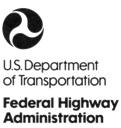Submittal Letter

1200 New Jersey Ave., SE
Washington, DC 20590
February 21, 2012
In Reply, Refer To: HOTM-1
Dear Colleague,
The Federal Highway Administration’s (FHWA) Office of Planning, Environment, and Realty, Office of Operations, the Federal Transit Administration’s (FTA) Office of Planning and Environment, and the Research and Innovative Technology Administration ITS Joint Programs Office are pleased to present this primer on Applying the Regional ITS Architecture to Support Planning for Operations. A number of resources have been produced over the last few years by FHWA and FTA to advance operations thinking in the transportation planning process. In particular, guidance, best practices, and examples have been developed and used to illustrate how an objectives-driven, performancebased approach could be applied to integrate management and operations strategies and programs into metropolitan and statewide transportation plans. This approach forms the basis for the Planning for Operations initiatives. Another aspect of the joint FHWA and FTA guidance is to facilitate the sustained application and use of the Regional ITS Architectures. The Regional ITS Architectures are another tool that can be used to help mainstream operations into the planning process. 23 CFR 940.5 requires that Regional ITS Architectures be “consistent with the transportation planning process for Statewide and Metropolitan Transportation Planning” and that a broad cross section of agencies involved in transportation operations, including highway agencies, public safety agencies, transit operators, and others be included in the architecture development process. Since the Architecture requirement took effect in 2005, over 300 regional ITS Architectures have been developed and many continue to be updated in accordance with Federal requirements. The benefits derived by agencies from coordinating elements of the planning for operations approach with regional ITS architectures are the motivation for this primer. The regional ITS architecture can provide a technical framework for regional operations integration, information sharing, and data to support performance monitoring. By reviewing architecture documents and conducting in-depth planning practitioner interviews, the primer offers transportation planners and operations managers a menu of opportunities for applying the regional ITS architecture to enhance planning for operations. Some of the areas where Regional ITS Architectures can enhance planning for operations include: improving collaboration between regional planning and operations practitioners, improving project scoping, improving traceability between regional objectives and operational strategies, and improving integration and coordination across agencies and systems. This primer, which continues the strong collaboration among FHWA, FTA, and professionals in the planning and operations communities nationwide, can be accessed electronically by visiting the USDOT website on Planning for Operations at http://www.plan4operations.dot.gov. We look forward to receiving your feedback, reactions, and experiences in implementing the recommendations in the Primer. Please direct any comments, questions, and suggestions to any of the following members of our staff:James T. Hunt at jim.hunt@dot.gov, 717-221-4422
Egan Smith at egan.smith@dot.gov, 202-366-6072; or
John Sprowls at john.sprowls@dot.gov, 202-366-5362.
Sincerely yours,
Robert E. Arnold, Director
FHWA Office of Transportation Management
James A. Cheatham, Director
FHWA Office of Planning
Lucy Garliauskas, Associate Administrator
FTA Office of Planning and Environment
Brian Cronin, Research Team Leader
Research and Innovative Technology Administration
ITS Joint Programs Office

